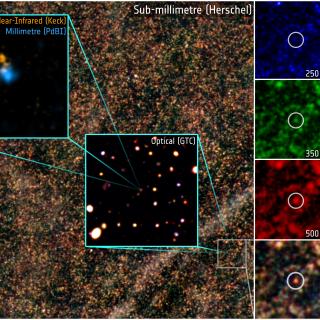Bibcode
Pierel, J. D. R.; Arendse, N.; Ertl, S.; Huang, X.; Moustakas, L. A.; Schuldt, S.; Shajib, A. J.; Shu, Y.; Birrer, S.; Bronikowski, M.; Hjorth, J.; Suyu, S. H.; Agarwal, S.; Agnello, A.; Bolton, A. S.; Chakrabarti, S.; Cold, C.; Courbin, F.; Della Costa, J. M.; Dhawan, S.; Engesser, M.; Fox, Ori D.; Gall, C.; Gomez, S.; Goobar, A.; Jha, S. W.; Jimenez, C.; Johansson, J.; Larison, C.; Li, G.; Marques-Chaves, R.; Mao, S.; Mazzali, P. A.; Perez-Fournon, I.; Petrushevska, T.; Poidevin, F.; Rest, A.; Sheu, W.; Shirley, R.; Silver, E.; Storfer, C.; Strolger, L. G.; Treu, T.; Wojtak, R.; Zenati, Y.
Bibliographical reference
The Astrophysical Journal
Advertised on:
5
2023
Journal
Citations
24
Refereed citations
19
Description
Supernovae (SNe) that have been multiply imaged by gravitational lensing are rare and powerful probes for cosmology. Each detection is an opportunity to develop the critical tools and methodologies needed as the sample of lensed SNe increases by orders of magnitude with the upcoming Vera C. Rubin Observatory and Nancy Grace Roman Space Telescope. The latest such discovery is of the quadruply imaged Type Ia SN 2022qmx (aka, "SN Zwicky") at z = 0.3544. SN Zwicky was discovered by the Zwicky Transient Facility in spatially unresolved data. Here we present follow-up Hubble Space Telescope observations of SN Zwicky, the first from the multicycle "LensWatch (www.lenswatch.org)" program. We measure photometry for each of the four images of SN Zwicky, which are resolved in three WFC3/UVIS filters (F475W, F625W, and F814W) but unresolved with WFC3/IR F160W, and present an analysis of the lensing system using a variety of independent lens modeling methods. We find consistency between lens-model-predicted time delays (≲1 day), and delays estimated with the single epoch of Hubble Space Telescope colors (≲3.5 days), including the uncertainty from chromatic microlensing (~1-1.5 days). Our lens models converge to an Einstein radius of ${\theta }_{{\rm{E}}}=({0.168}_{-0.005}^{+0.009})^{\prime\prime} $ , the smallest yet seen in a lensed SN system. The "standard candle" nature of SN Zwicky provides magnification estimates independent of the lens modeling that are brighter than predicted by $\sim {1.7}_{-0.6}^{+0.8}$ mag and $\sim {0.9}_{-0.6}^{+0.8}$ mag for two of the four images, suggesting significant microlensing and/or additional substructure beyond the flexibility of our image-position mass models.
Related projects

Anisotropy of the Cosmic Microwave Background
The general goal of this project is to determine and characterize the spatial and spectral variations in the temperature and polarisation of the Cosmic Microwave Background in angular scales from several arcminutes to several degrees. The primordial matter density fluctuations which originated the structure in the matter distribution of the present
Rafael
Rebolo López

Formation and Evolution of Galaxies: Observations in Infrared and other Wavelengths
This IAC research group carries out several extragalactic projects in different spectral ranges, using space as well as ground-based telescopes, to study the cosmological evolution of galaxies and the origin of nuclear activity in active galaxies. The group is a member of the international consortium which built the SPIRE instrument for the
Ismael
Pérez Fournon